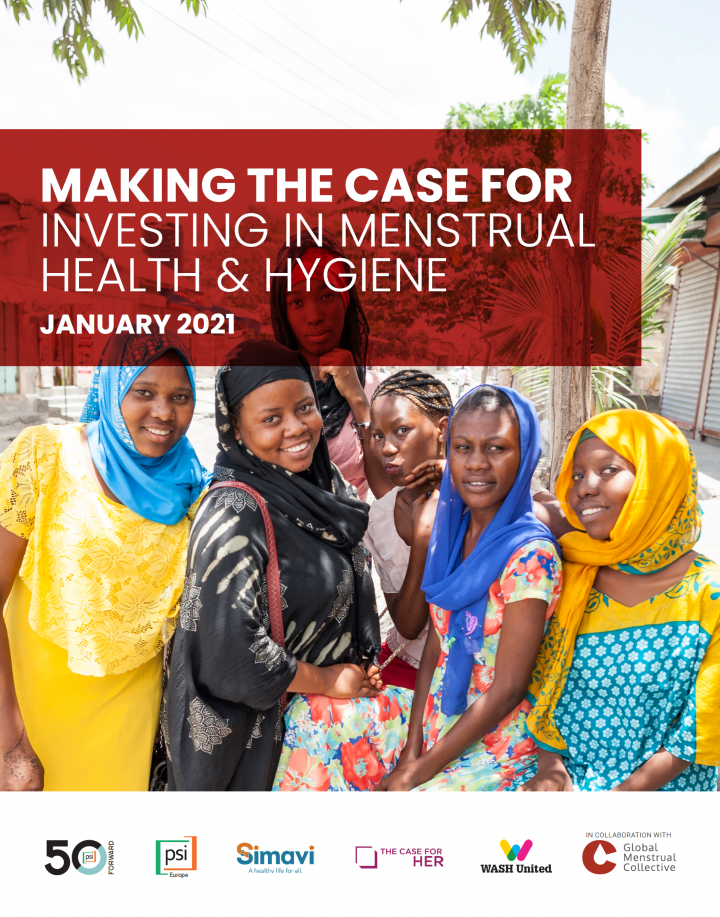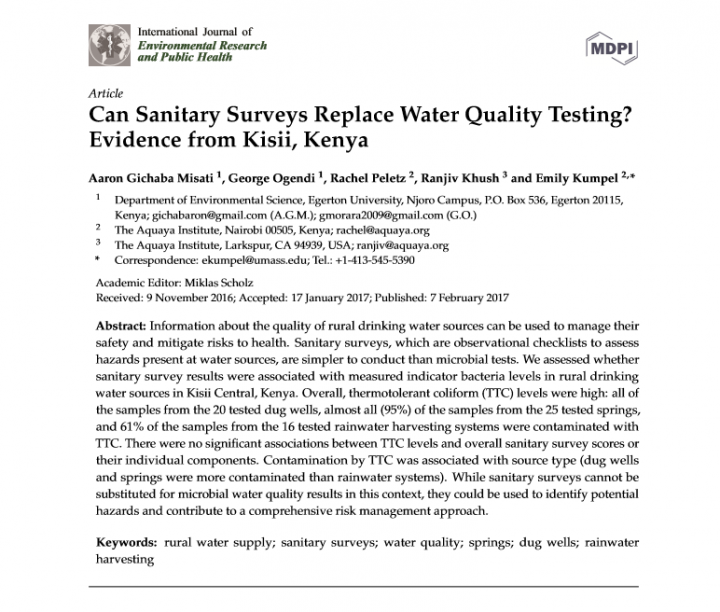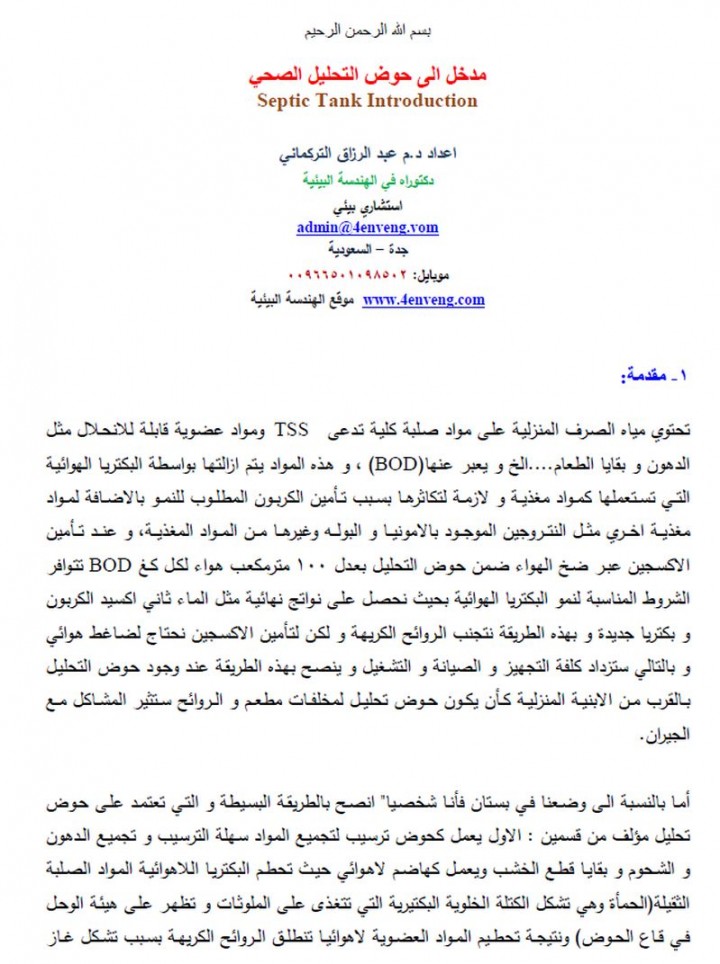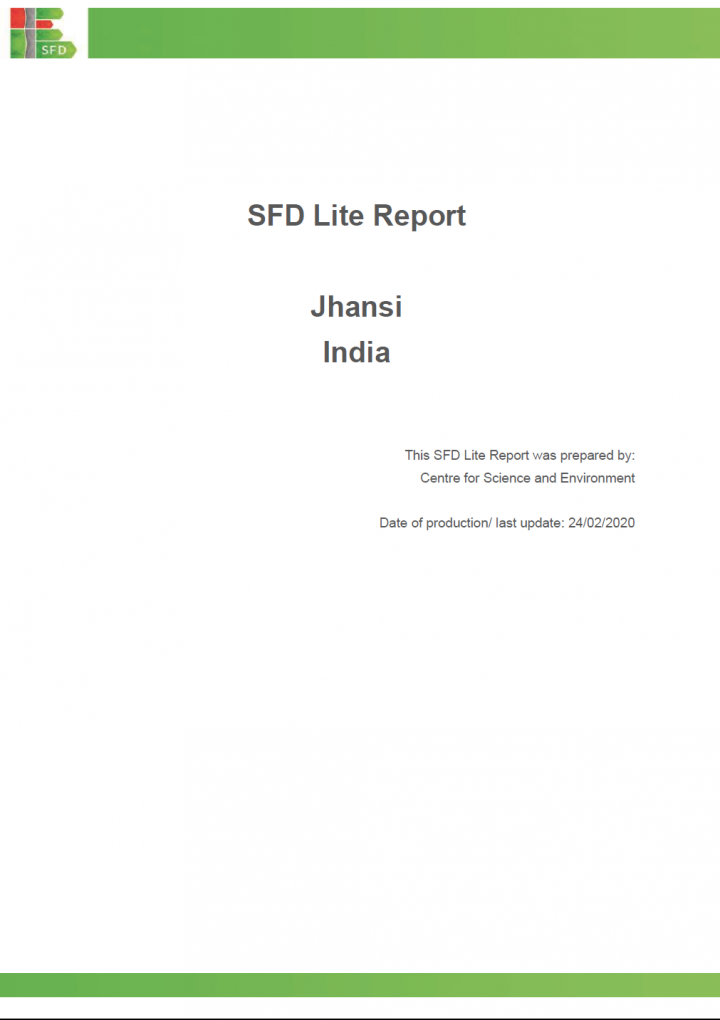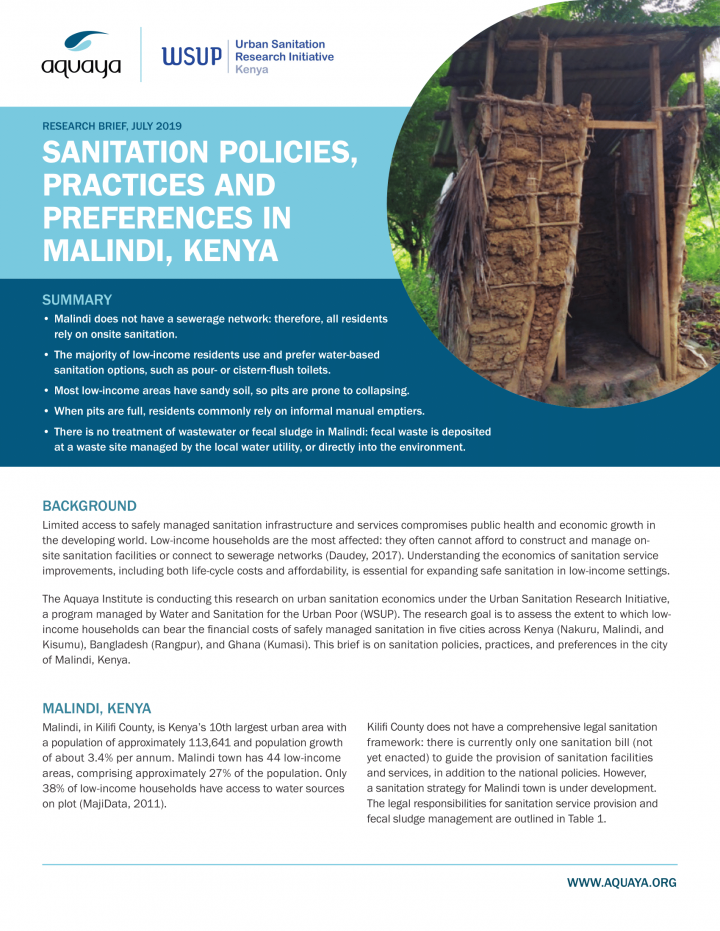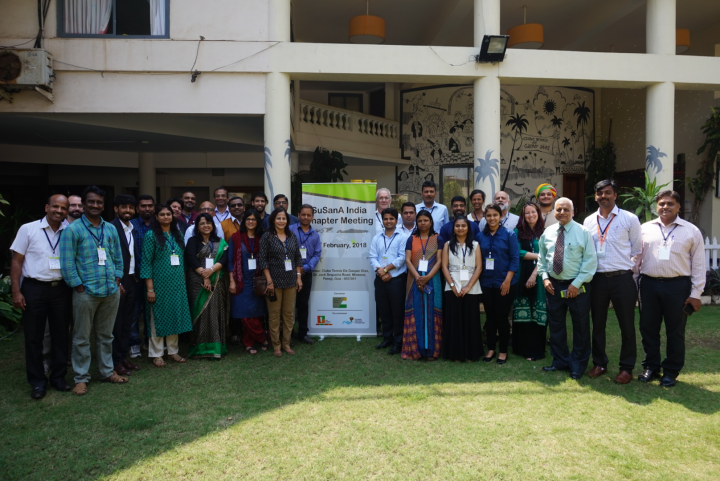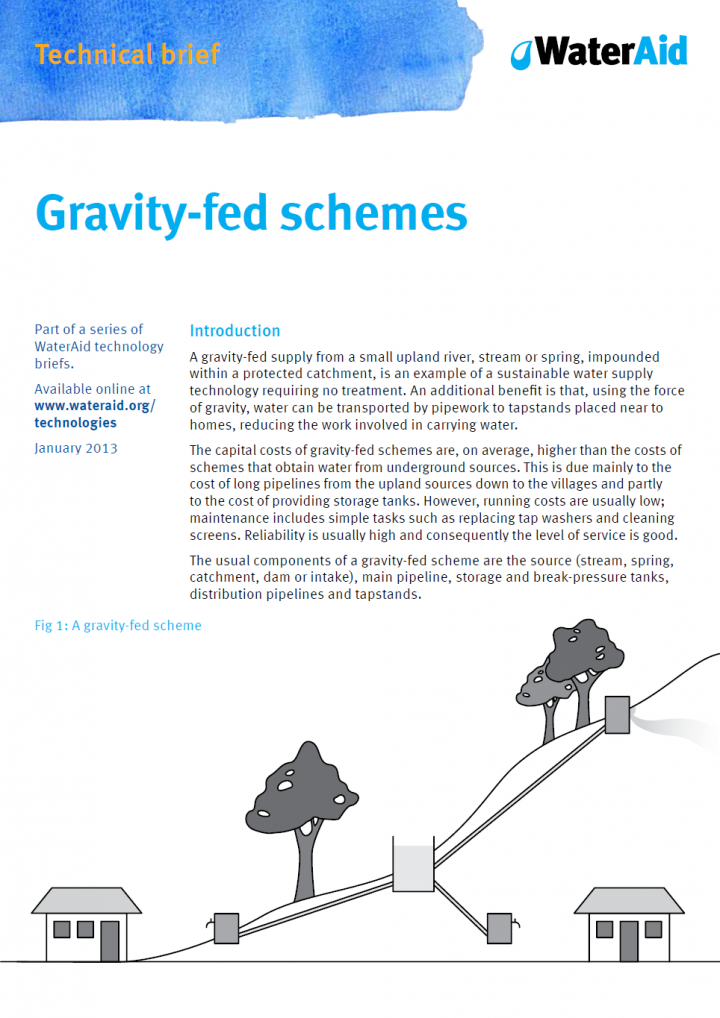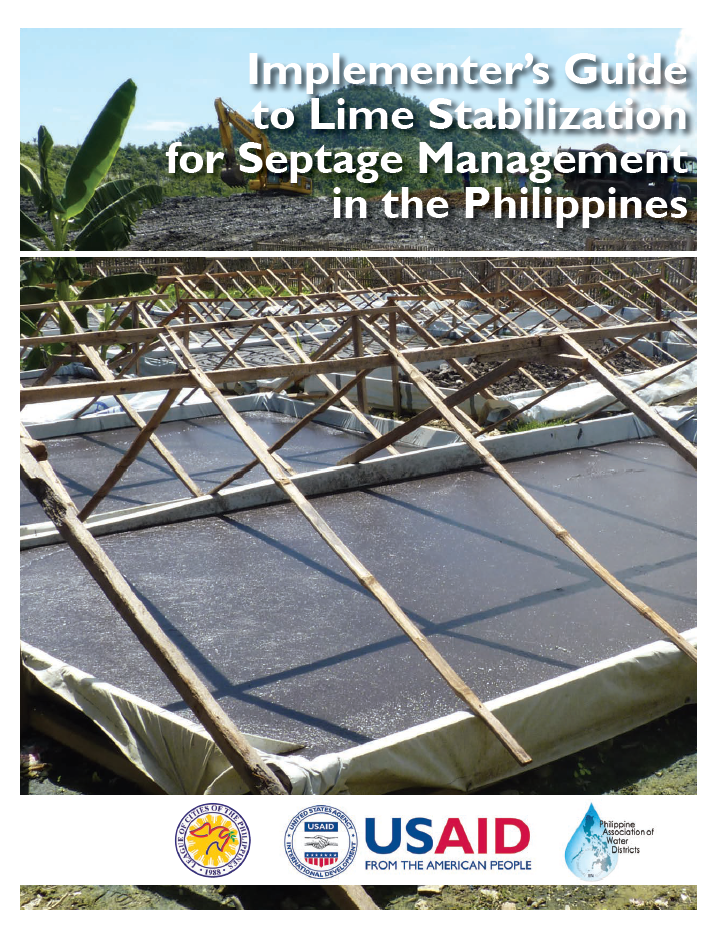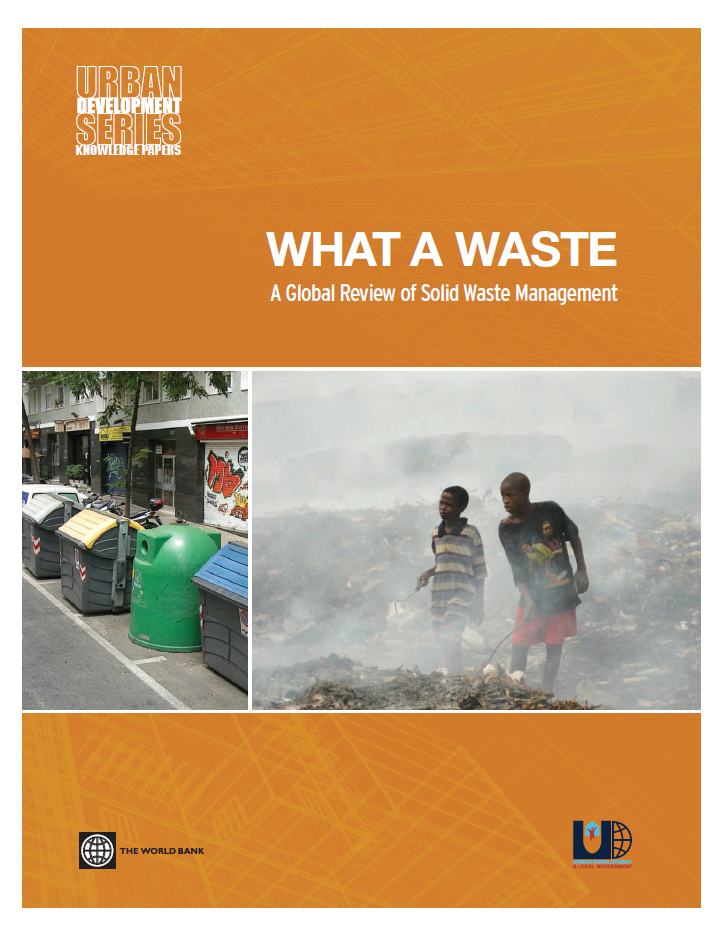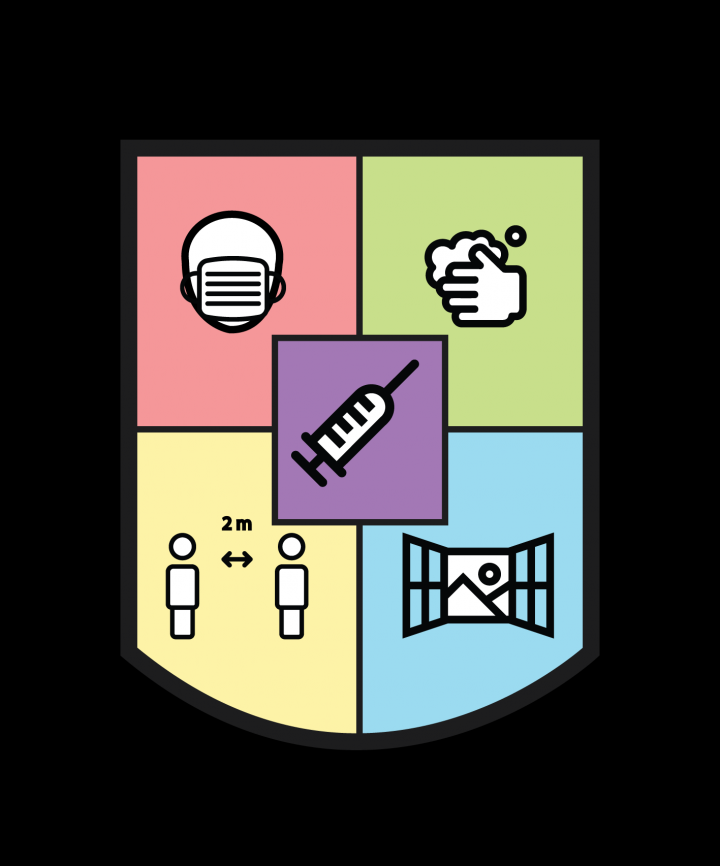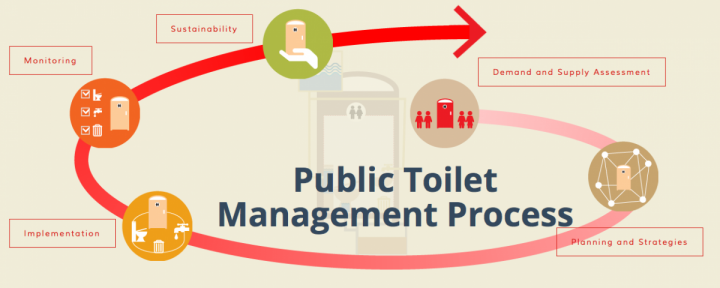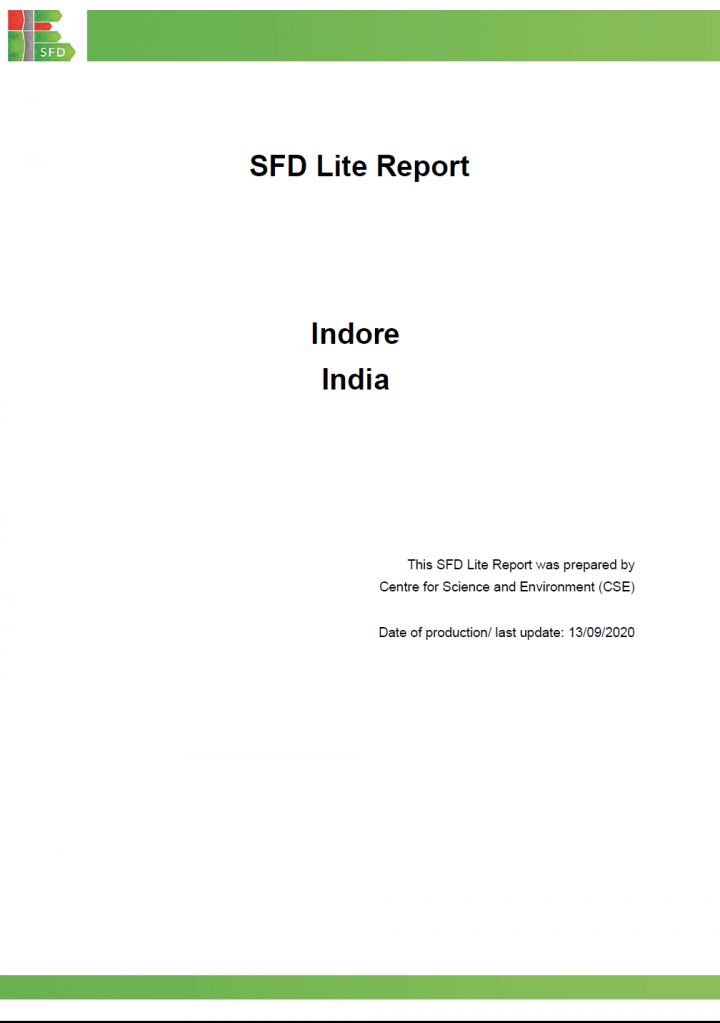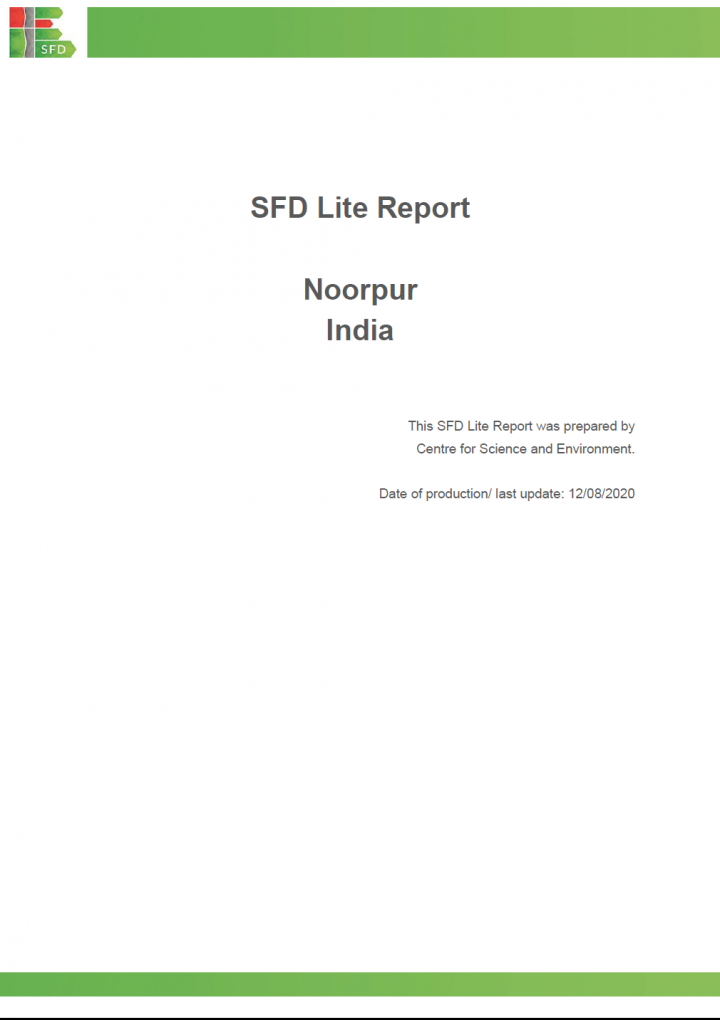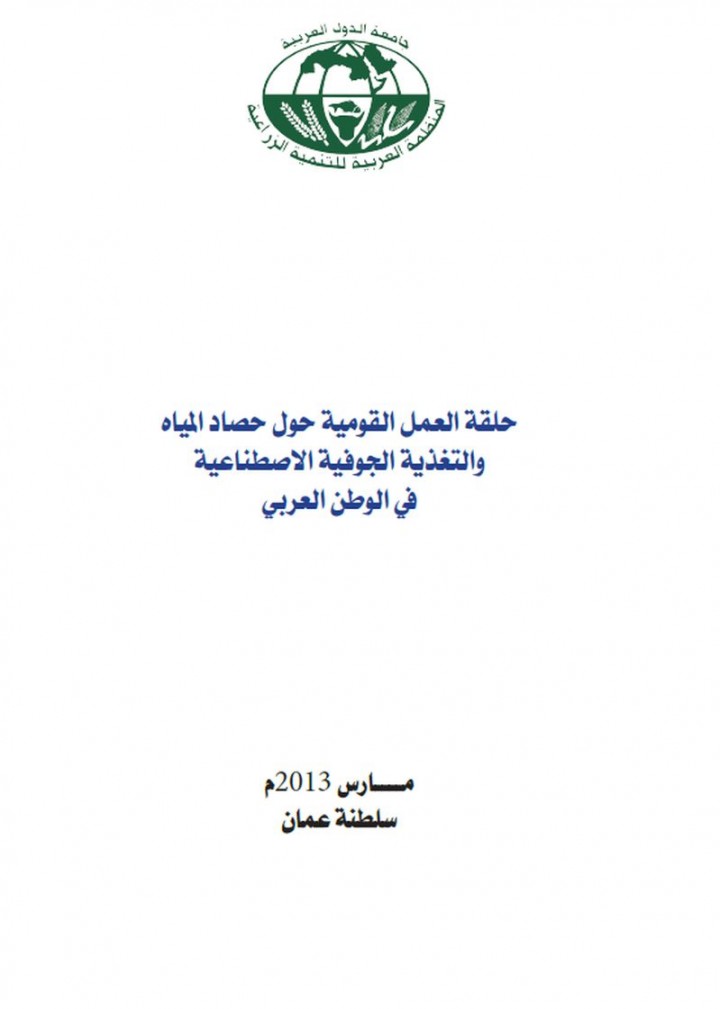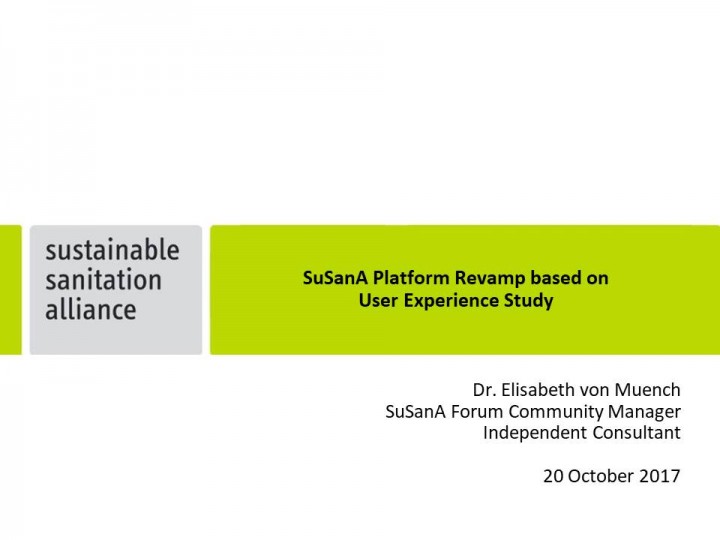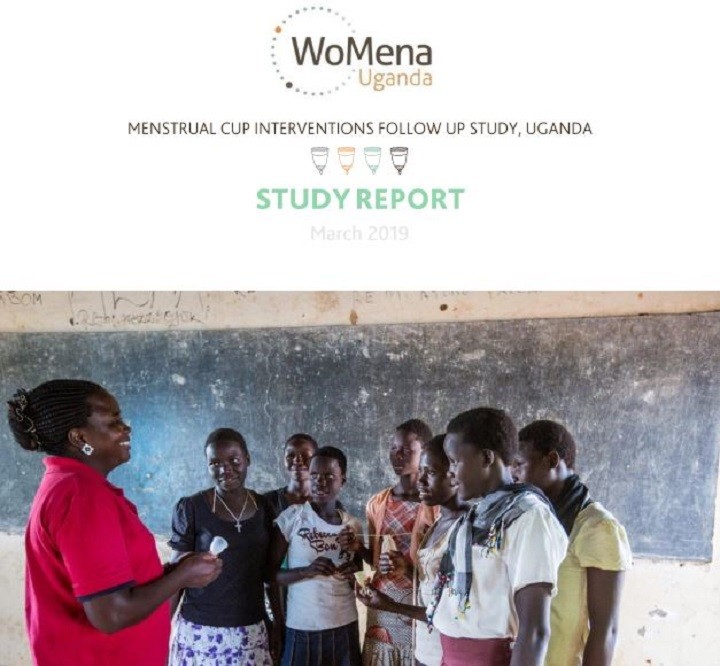Searching for information on Sanitation Workers?
The Sanitation Workers Knowledge + Learning Hub is the best source for all current news, trends, articles and updates on sanitation workers rights around the world.
The present series of books has been produced based on the book "Biological wastewater treatment in warm climate regions", written by the same authors and also published by IWA Publishing. In this version, the books aim at presenting consolidated technology based on worldwide experience available at the international literature. However, it should be recognised that a significant input comes from …
Many women and girls worldwide do not have the knowledge, skills, services, and products or support to ensure their well-being during menstruation. Due to the link of menstruation with health, education, water and sanitation, and socio-economic factors, these challenges are even more urgent for those who menstruate in low- and middle- income countries (LMICs). At the same time, there is evidence …
In 2020 UNICEF Nepal’s implementing partner COSDER, Gorkha observed that Madarhawa village (480 inhabitants and 1 school), Nepal (located 60km northwest of Lumbini) was without improved WASH infrastructure and that its inhabitants were not observing improved sanitary and hygiene practices. COSDER, Gorkha decided to act and trained the children of Madarhawa on WASH related issues and solutions. …
Information about the quality of rural drinking water sources can be used to manage their
safety and mitigate risks to health. Sanitary surveys, which are observational checklists to assess
hazards present at water sources, are simpler to conduct than microbial tests. We assessed whether
sanitary survey results were associated with measured indicator bacteria levels in rural drinking
water …
The city of Jhansi is called as the Gateway to Bundelkhand, situated between the rivers Pahuj and Betwa at an average elevation of 285 metres (935 feet). It is about 415 kilometres from New Delhi and 99 kilometres south of Gwalior. Jhansi is a major commercial, tourist and educational centre in the Bundelkhand region of Uttar Pradesh state. In addition, there is a major industrial area at …
Sanitation Experts Discuss their Projects with Stockholm Environment Institute Bill & Melinda Gates Foundation Grantees Title: "Innovation in Toilet Designs and Treatment Technologies"
This is the recording of an online expert chat using Adobe Connect hosted by Stockholm Environment Institute (Arno Rosemarin) on 12 September 2013. It is part of a larger grant that SEI received in November 2012 …
The Aquaya Institute is conducting this research on urban sanitation economics under the Urban Sanitation Research Initiative. This brief is on sanitation policies, practices, and preferences in the city of Malindi, Kenya.
SUMMARY
• Malindi does not have a sewerage network: therefore, all residents rely on onsite sanitation.
• The majority of low-income residents use and prefer …
The second SuSanA India Chapter meeting was held in Panaji, Goa, India on 21 February 2018 - just after the 50th Annual Convention of the Indian Water Works Association (IWWA). The seminar encouraged discussions on urban sanitation challenges, holistic approaches to sanitation as well as financing and monitoring sanitation to accelerate progress on SDGs.
Please find the presentations of the …
A gravity-fed supply from a small upland river, stream or spring, impounded within a protected catchment, is an example of a sustainable water supply technology requiring no treatment. An additional benefit is that, using the force of gravity, water can be transported by pipework to tapstands placed near to homes, reducing the work involved in carrying water.
The capital costs of gravity-fed …
The Sirsa city is a municipal council and the headquarter of Sirsa district in Haryana. It is located at mean elevation of about 205 msl at 29.53°N 75.02°E. It is about 260 km NW of New Delhi and 240 km from state capital of Chandigarh. The city covers an area of 26 km2. It is said to be one of the oldest places of North India and its ancient name was Sairishaka, which finds its mention in …
Local government units (LGUs) just beginning to implement a new septage management program may wish to phase in the program over time. Lime stabilization can be done as a first phase following a disaster and perhaps serve the public and commercial sectors. In the next phase, a municipal or city-wide program to desludge all septic tanks on a regular schedule using treatment technologies besides …
Waterberg TVET College is a public further education and training institution which has been established according to the FET Act no 98 of 1998. The College is registered with the Limpopo Department of Education in terms of the Provincial Regulations for Registration of Institution, and its EMIS number is 991102502. The college is deemed accredited by UMALUSI, the quality assurance body …
This report provides consolidated data on MSW generation, collection, composition, and disposal by country and by region. Despite its importance, reliable global MSW information is not typically available. Data is often inconsistent, incomparable and incomplete; however as suggested in this report there is now enough MSW information to estimate global amounts and trends. The report also makes …
Faced with a debilitating second COVID-19 wave, relevant messaging on CABs is vital to keep millions safe from infection, and support recovery of those infected. This Calls to Action urges CSOs working with communities, and with local Government to prioritize messaging on COVID-19 protective measures, address the need for new or more nuanced messaging, and use effective channels to reach …
Indore, one of the fastest-growing cities of India, is the largest city of Madhya Pradesh, in terms of its population, with 841 people per sq. km. One of the 100 Indian cities selected under the Smart City Mission (urban renewal and retrofitting program by the Government of India to make cities sustainable and friendly for its citizens). Indore is also the financial capital and education hub of …
Noorpur is a small town in Bijnor District, Uttar Pradesh and is located 38 km South-East of Bijnor city, District Headquarters. According to Census 2011 Noorpur has a population of 38,801 residing in 6,324 households (HHs). The population of the city as per Swachh Survekshan (Country wide annual ranking mechanism for cities with respect to sanitation) conducted in 2019 is 43, 500 corresponding …
About the Training Modules
Training Modules on decentralised sanitation, septage and wastewater have been developed, tested and delivered by SCBP during 2016-17, during training of government officials from UP, Rajasthan, MP, Telengana, Bihar, Karnataka, West Bengal, Jharkhand and Chattisgarh. These Modules have also been used in Training of Trainers(ToTs) of Amrut Nodal Agencies, Academia, …
This library entry contains secondary (less important) documents for a grant that Arno Rosemarin from Stockholm Environment Institute was leading and which was funded by the Bill and Melinda Gates Foundation.
See links below to view the main documents from this grant, as well as a discussion that took place on the SuSanA Discussion Forum.
Globally many women and girls do not have access to appropriate Menstrual Health Management (MHM) methods that are effective, comfortable, convenient, affordable and safe to use and dispose of. Combined with inadequate facilities, social support and knowledge of menstruation as well as prevailing menstrual taboos and stigma, the lack of appropriate MHM methods can impact the physical, social and …
Cumilla city corporation stands on the bank of the river Gumti in Cumilla district. Cumilla City Corporation (CoCC) consists of 27 wards with current population 0.5 million and an area of 53.04 sq.km.
Most of the population uses septic tanks (70%), and around 30% population uses toilet with pits. Of the 70% population in the City Corporation (CC) that is connected to septic tanks, around 43% …


